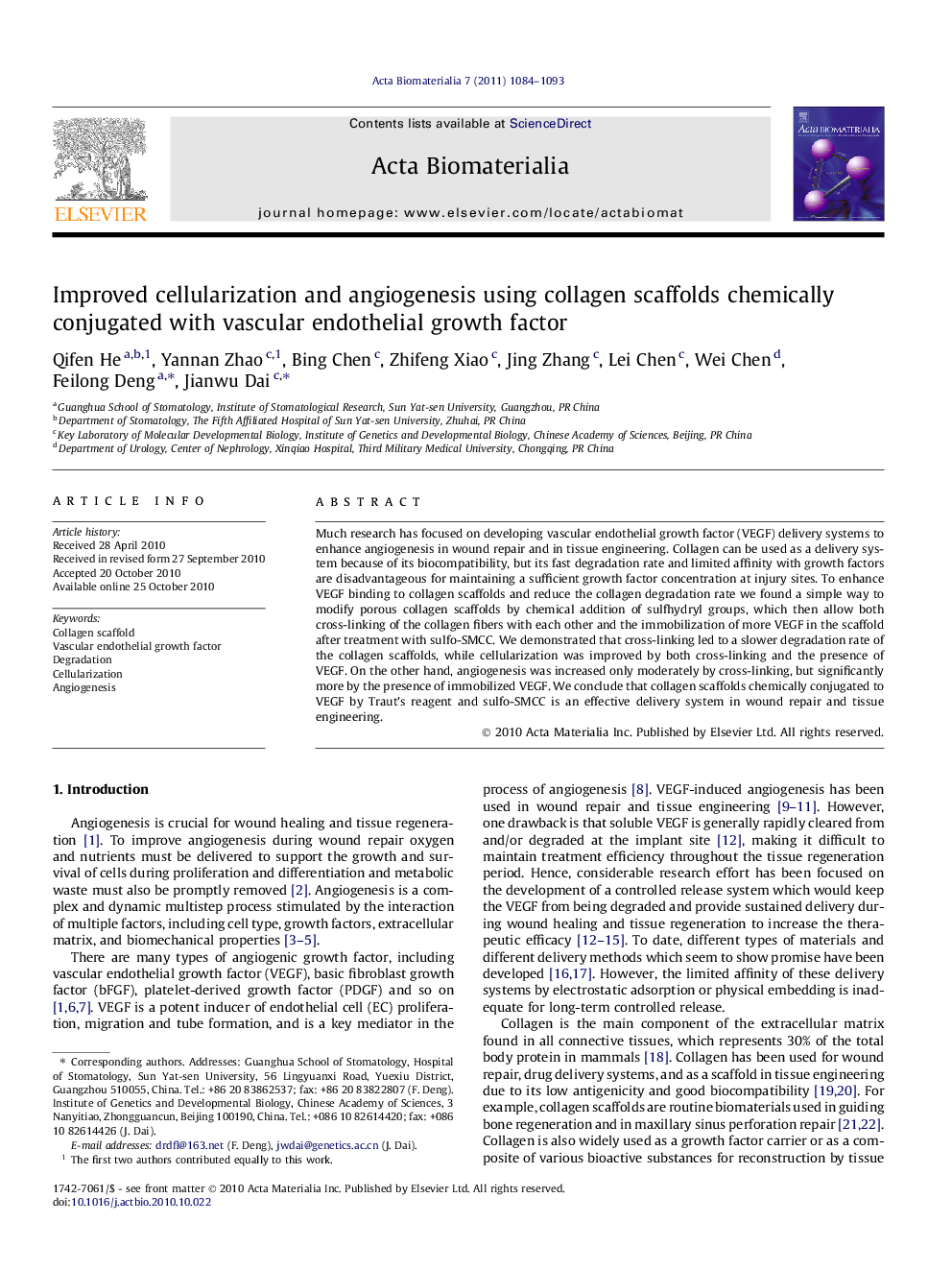| Article ID | Journal | Published Year | Pages | File Type |
|---|---|---|---|---|
| 10160165 | Acta Biomaterialia | 2011 | 10 Pages |
Abstract
Much research has focused on developing vascular endothelial growth factor (VEGF) delivery systems to enhance angiogenesis in wound repair and in tissue engineering. Collagen can be used as a delivery system because of its biocompatibility, but its fast degradation rate and limited affinity with growth factors are disadvantageous for maintaining a sufficient growth factor concentration at injury sites. To enhance VEGF binding to collagen scaffolds and reduce the collagen degradation rate we found a simple way to modify porous collagen scaffolds by chemical addition of sulfhydryl groups, which then allow both cross-linking of the collagen fibers with each other and the immobilization of more VEGF in the scaffold after treatment with sulfo-SMCC. We demonstrated that cross-linking led to a slower degradation rate of the collagen scaffolds, while cellularization was improved by both cross-linking and the presence of VEGF. On the other hand, angiogenesis was increased only moderately by cross-linking, but significantly more by the presence of immobilized VEGF. We conclude that collagen scaffolds chemically conjugated to VEGF by Traut's reagent and sulfo-SMCC is an effective delivery system in wound repair and tissue engineering.
Related Topics
Physical Sciences and Engineering
Chemical Engineering
Bioengineering
Authors
Qifen He, Yannan Zhao, Bing Chen, Zhifeng Xiao, Jing Zhang, Lei Chen, Wei Chen, Feilong Deng, Jianwu Dai,
